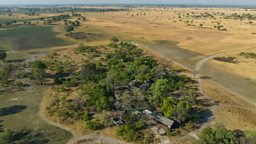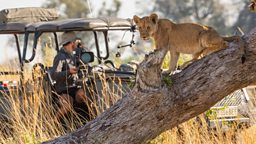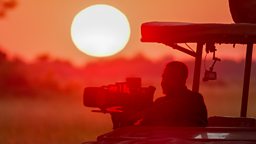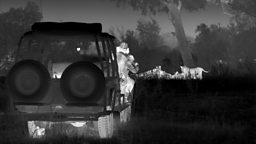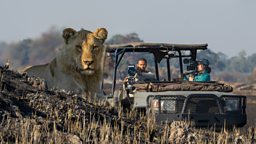The Okavango Delta: An introduction
By Big Cats 24/7 Assistant Producer Tom Parry
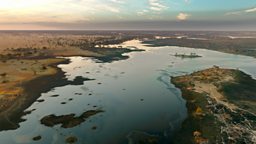
Botswana’s Okavango Delta is one of the most remarkable and unique ecosystems on Earth.
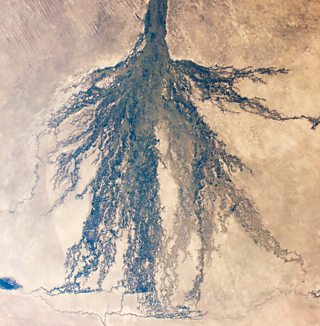
The vast inland river delta is a mosaic of channels, lagoons, swamps and islands, and with its infamous flood at its peak, it spans more than 6,000 square miles. But what makes the Okavango truly extraordinary is its location – slap bang in the middle of the ancient and arid Kalahari Desert. It is an oasis in one of the driest places on the planet.
This miracle is made possible through a quirk of geography in the south-west corner of Africa. The Delta’s brief seasonal rains late in the year are not enough to create a flood like this; in fact, most of this water first arrives more than 400 miles to the north, as rain in the Angolan Highlands. From here, it slowly trickles south towards Botswana, away from the Atlantic Ocean, eventually forming the Okavango River.
While most rivers drain into the sea, the Okavango is instead diverted inland by a series of geological fault lines deep in the Earth’s crust and therefore forced into the flat, open wasteland of the Kalahari desert. Here, more than 11 cubic kilometres of water fan outwards into a vast network of waterways, transforming a lifeless desert into a lush, green paradise and forming one of the largest inland river deltas in the world.
The Okavango’s water supply is not turned on all-year-round, however. The entire process is seasonal, resulting in cyclical flooding and drying of the landscape. During the water’s six-month journey from the Angolan Highlands to Botswana, the driest months of the year creep in and the Delta becomes an arid world of savannah and parched floodplains.
When it eventually arrives and spreads into the vast network of channels and lagoons, the landscape is transformed and the water provides a vital reprieve until the Delta’s next rains.

4陆 million Olympic swimming pools worth of nutrient-rich freshwater
The annual injection of more than 4½ million Olympic swimming pools worth of nutrient-rich freshwater into the middle of an ancient desert creates a truly extraordinary ecosystem. The flood introduces all of life’s key ingredients, and over millennia has created one of Africa’s most biodiverse regions in the unlikeliest of places. The Delta has become home to a rich array of flora and fauna, attracting huge populations of elephants, hippopotamuses, crocodiles, buffalo and antelope from across the region – and this abundance of prey is a magnet for Africa’s iconic predatory big cats. There are few places on Earth where lions, leopards and cheetahs can survive and thrive in such numbers and such proximity, and many of their antics here can be seen nowhere else.

Gordon sees the flood for the first time
Gordon arrives at the edge of the Okavango's seasonal floodwaters.
-
![]()
Creating a production hub in the Delta
By Gillian Goodlet, Production Manager
-
![]()
Learning the language of the bush
By wildlife cinematographer Greg Hartman
-
![]()
A day in a filming truck
By wildlife cinematographer Anna Dimitriadis
-
![]()
Sleeping out in the bush
By Sets Nthomiwa
-
![]()
Filming at night
By Assistant Producer Harry Lawrence
-
![]()
From safari guide to cinematographer
By wildlife cinematographer Reatile Schulte to Brinke
